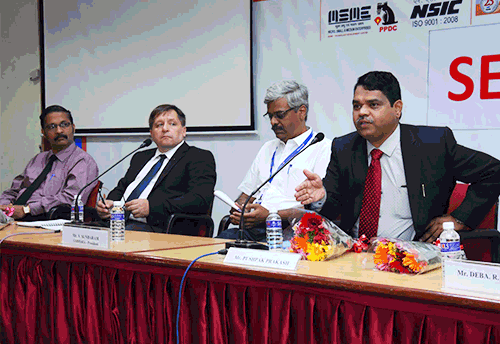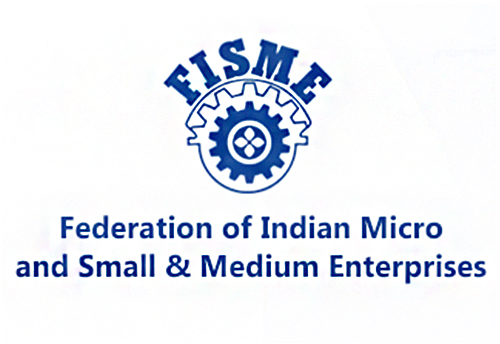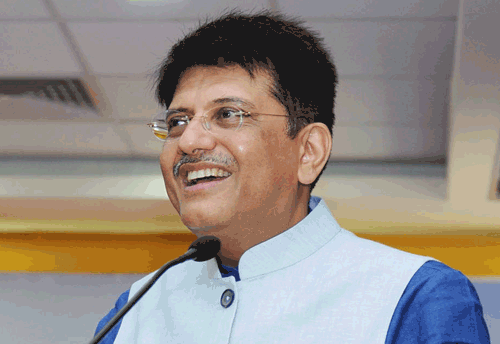MSMEs on the Roller Coaster: Unhelpful Banks and Less Understood Regulations
Updated: Aug 08, 2016 08:08:58am

MSMEs on the Roller Coaster: Unhelpful Banks and Less Understood Regulations
By B. Yerram Raju and K. Manicka Raj
Hyderabad, Aug 8 (KNN) In a recent address RBI Governor Raghuram Rajan said, “A Banker who lends with the intent of never experiencing a default is probably over-conservative and will lend to too few projects, thus hurting the growth.” In the same vein he added, “Indeed, sometimes banks signed up to lend based on project reports by the promoters’ investment bank (in the case of MSMEs chartered accountants), without doing their due diligence.”
There is a total mismatch between the banks understanding and RBI's intentions on the guidelines issued in respect of MSME financing , follow up and useful implementation of the various schemes. Because of accumulation of NPAs banks seem to have lost their sense of judgement and MSMES are the victims and the SARFAESI ACT 2002 has become very handy. Even in the best of times banks did not revive or restructure small scale industries more than 1.5 percent of their own assessed potentially viable enterprises as revealed by the RBI Annual Reports.
Rajan has succinctly summarised a few cardinal principles for dealing with stressed assets:
“1. Viability does not depend on the debt outstanding, but on economic value. Debt may have to be written down to correspond to what is viable.
2. Complete projects that are viable even if it require additional funds infusion.
3. Don’t throw good money after bad money simply because there is unreliable promise that debt becomes serviceable.”
Unfortunately by not following such principles, Banking is in a terrible mess now and one wonders whether the latest amendments to the Debt Recovery Laws would save the situation. When breach of regulations get honours how can a law help? The involvement and commitment to provide lifeline to SMEs is literally absent and the mindset to have a feel of the segment is virtually absent.
Although the Banks are supposed to suggest OTS in deserving cases as per RBI guidelines issued in 2009 there is little evidence to banks volunteering to do it. In fact they tend to give this facilitation only when the collateral security value falls short of the outstanding loan amount. Wherever the collateral security value is more than the total outstanding loan, SARFAESI Act proceedings are resorted to as first option.
After they fail to realise in public auction of the collateral security, they hand over to the ARC the same assets at a large discount and take tradable Security Certificate. Before this discounted sale of asset to the ARC, Bank could as well offer to the borrowing SME at even a lesser discount, under OTS and give the first right of refusal. This would have actually saved the Banks the ordeal and the loss on the declared NPA asset could have been minimal. However, this approach carries the risk of compromising Bank’s interests by a few unscrupulous Managers handling this portfolio. Such risk can be mitigated by better checks and balances and tweaking discretionary powers under such circumstances appropriately.
If every file relating to SAFRAESI Act proceedings has this mandatory check list for compliance we feel that the sector would be saved of savagery of perverse regulatory interpretation and banks would also be saved of NPAs in this segment.
|
S.No |
Steps |
Remarks |
|
1. |
1. Before declaring the Account as NPA Banks should identify incipient sickness by classifying the accounts into SMA-0; SMA-1; SMA-2 SMA-0 -Principal or interest payment not overdue for more than 30 days but account showing signs of incipient stress SMA-1:Principal or interest payment overdue between 31-60 days SMA-2 : Principal or interest payment overdue between 61-90 days 2. Communicate the classification to the borrower
|
RBI/2015-16/338 FIDD.MSME & NFS.BC.No.21/06.02.31/2015-16 dated 17th March 2016 |
|
|
|
|
|
2. |
In case of SMA-0- Discuss with Entrepreneur and Handhold the enterprise;
|
RBI Master Circular : RBI/2015-16/101 DBR.No.BP.BC.2/21.04.048/2015-16 dated July1, 2015
|
|
3. |
In case of SMA-1 Early Warning Signals: Corrective Action Plans (CAP) in 5days of noticing the stress in the asset Up to Rs.10lakhs limit Branch should introduce the CAP mandatorily |
Zonal Committee to take action
Para 2.2 of the circular in item 1 supra. |
|
4. |
In case of SMA-2, discuss with the entrepreneur the plan for restructuring/revival and finalise within 30 days; If TEV study were to be decided by the Committee, then the study and revival package as recommended should be put in place within 60 days |
Zonal Committee to take action as per the above circular. |
|
4. |
If the enterprise fails to revive after the CAP/Revival Plan, option for OTS should be allowed. Mandatory notice to be issued in this regard. |
RBI/2008-09/467 |
|
5. |
If the OTS doesn’t get finalised, then the Manager has to communicate to the borrower and controlling authority recovery through legal process – Borrower can request within 10 working days; Bank Committee to convey decision within 30 days |
Paragraph 11. RBI/2015-16/338 FIDD.MSME & NFS.BC.No.21/06.02.31/2015-16 dated 17th March 2016 |
|
7. |
1. Notice of default to repay the overdues within 60 days has to be issued. 2. Before issue of notice of attachment of collateral security, Bank has to discuss the value of the collateral with the borrower 3. Banker has to get the valuation of the property by the official valuer mandatorily. 4. Bank has to communicate such value to the borrower. 5. Allow the borrower to re-exercise OTS option at the official value given by the valuer. 6. If the borrower doesn’t want to settle through OTS then the Bank proceeds against the collateral securities. |
Section 13(2) of the SARFAESI Act 2002 |
|
8. |
Bank has to give 30 days notice to the borrower before exercising its right to proceed against the property for sale by auction after the expiry of notice period. |
Section 5 of SAFRAESI Act 2002 |
|
9 |
Bank can approach Asset Reconstruction Company (ARC) and the ARC issues a Security Receipt and has to put a specific scheme for reconstruction/sale |
Section 8 of SAFRAESI Act |
As per the new guidelines, a Micro or Small Enterprise (as defined in the MSMED Act 2006) may be said to have become Sick, if (a) any of the borrowal account of the enterprise remains NPA for three months or more OR (b) there is erosion in the net worth due to accumulated losses to the extent of 50% of its net worth during the previous accounting year.
Banks have been advised that the decision on viability of the unit should be taken at the earliest but not later than 3 months of becoming sick under any circumstances and the rehabilitation package should be fully implemented within six months from the date the unit is declared as 'potentially viable' / 'viable' (para 4.6 of file:///G:/RBI%20circulars/RBI%20Master%20Circular%20on%20MSMEs.pdf dated July 1, 2015)
MANDATORY INSTRUCTIONS FOR CLASSIFICATION OF A UNIT AS WILFUL DEFAULTER
|
S.No. |
Steps |
Remarks |
|
|
Bank has to advise the borrower in writing in case of any and all of the following aspects:
|
RBI Master Circular on wilful defaulters -RBI/2014-15/73 DBR.No.CID.BC.57/20.16.003/2014-15 dated July 1, 2015 (updated till January 1, 2015 |
|
|
Borrower differing with such notification can approach the Grievance Redress Committee of the Bank located at its Zonal/Head Office The Committee’s decision is final and shall be communicated to the disputant within fifteen days. |
Same as above. |
*Dr. B. Yerram Raju is an economist and presently Adviser, MSE Facilitation Council, Government of Telangana and Mr K.Manicka Raj, I.A.S., Commissioner of Industries, Govt. Of Telangana. The views expressed are personal. (KNN India)










